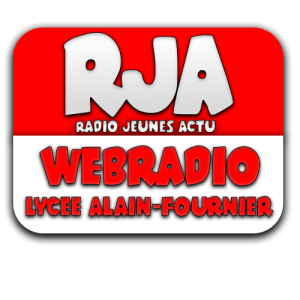Translation : Sandie Daniels.
Hello, We have met the Israeli students and the Palestinians by now, and some of us have even danced with some south Corean pupils, but before we can tell you about this, here is what happened yesterday…Our day starts with a thought to Louise Lescure, our favorite architect who came to Mirande to give us a speech about Bauhaus in Israël. Indeed, Yad Vashem memorial is a vast complex with a museum, a research center and many remembrance centers. Rita, our very own guide, first points out the ugliness of the build. As its architect once said :’death doesn’t have to be good looking.’From a distance, the building resembles a concrete block stuck into the rock of the hill. The set shouts out the tragedy it is supposed to testify for.One has first to walk through a den-like corridor, mimicking a very much alive and fertile ‘stomach of the beast’. At the end, a triangular shape projects films about the life of the Jews in Europe before 1933. Only as one truns around, one can realise the perspective assumed by those two huge walls, squeezing to meet just above our heads. There is scarcely any light a the end of this tunnel. This source of luminosity cannot be reached easily either : the path leading to it is tortuous. We use a maze dug into the rock either side of the tunnel to go ahead. From the early days of antisemitism, to the freeing of the camps and of the whole of Europe, the museum shows how the murdering craze sets up to evolve into mass murder. Many times, our students will freeze before the objects and images displayed in the windows. Along the way, our guide puts names and faces on the facts being told. Death centers and ‘Shoah by bullet’ are not just words in our ears any more, and the victims are no longer mere numbers.They have names and it is Yad Vashem’s first mission to give back their names to the people who have been robbed of it. The end of our visit leads us under the dome, full of pictures and detail cards of the victims of the genocide. At the end of the tunnel, horizon expands onto a terrass : the view is stunning. The message is clear : the opening view is the Jewish people’s future.On our way to the research center, our guide shows us the children’s memorial : in the dark, many candle lights are refracting into mirrors, symbolizing the young victims of the Shoah : one million five hundred thousands in total. Then, it is time to meet Berthe Elson-Badehi . She was nine when she was hidden away in Marie Massonnat’s place, a little village in Savoie called Montcel, by the jewish branch of the M.O.I. ( Communist Resistance Mouvement).
In May 1944, the Gestapo turns up at the house whilst Berthe’s mum had come to visit her daughter. Marie Massonnat quickly goes out to meet the enquirers before they can reach the house where hide the refugees. She then convinces them that the STO refractor they are looking for is not here. Back now, the pupils are moved to tears by the story of Berthe. She finishes with telling us about the death of her grandson fallen in one the Israeli tanks more recently. In her mind, there is a a direct link between what happened to her when she was little and the fate of her grandson. We take a few minutes to recover from our emotions. And then it is time for Maylis, Axel,Rose-Lou, Jade and Tonin to present our project, the rescuing organized by the Lacaves and our booklet, to the members of Yad Vashem. They are given a statue of D’Artagnan by Baptiste in the name of Mirande’s Maire.At the Justes’ Wall, we pay hommage to the Lacaves. Marie and Gaston’s names are written on wall number 5, in column 1996. Our Laszlo finds also the name of Marie Massonnat nearby. The Martinez’ are not written yet : soon they will be there too.After lunch, time to set off to Hertzl Mount. There lays the brought back body of the father of sionnism, the dream of a country for the jewish people. We arrive whislt the young conscripts take part in a ceremony. Our guide Jeremy, who was once himself a conscript, explains the uniforms and the ranks.Further down, we finds the graves of the prime ministers Golda Meir, Shimon Peres and Itzhak Rabin. Watching over this last tomb, cameras are there to prevent the place from being desecrated. Rabin took part in the Oslo accords but was murdered by an Israeli extremist. He was not loved by all. Some might say he bargained Israel. A few meters down, soldiers from the Tsahal fallen at war or in duty are buried.Back down to earth, we go back to the old Jerusalem where consumerism calls : an hour of frantic search to find the authentic gift that has to be bargained, all to come back feeling robbed, that is the general feeling amongst us.Looking at the Knesset, Jeremy gives us a lesson in geopolitics. Using the french fourth republic’s illustration to back up his study, he is trying to convey some of the secrets fo the Israeli system of parliament. Facing corruption accusations, Benyamin Netanyahou is about to take part in the next legislatives elections announced by posters displayed on the city walls. If his political party succeeds, they will hold the record of the longest staying prime minister . With over thirteen years in the office, our driver Boaz, both arabic and Israeli, insists the country is still a democracy. Boaz takes us back to the Hostel. The atmosphere is still.










